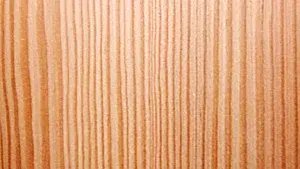Foster’s No. 2 Holly Lumber
- June 27, 2023
- 0 comment

Foster’s No. 2 Holly Lumber is a high-quality hardwood known for its exceptional properties and versatile applications. This lumber is derived from the Holly tree species and is renowned for its fine grain, remarkable durability, and beautiful white coloration. It is commonly used in a variety of woodworking projects due to its unique characteristics.
Here’s a table that covers the specifications of Foster’s No. 2 Holly Lumber:
| Category | Information |
|---|---|
| Common Name(s) | Holly |
| Scientific Name | Ilex spp. |
| Distribution | Native to the Eastern United States |
| Tree Size | Medium-sized, reaching up to 30-50 feet in height |
| Average Dried Weight | 48 lbs/ft3 (770 kg/m3) |
| Specific Gravity | 0.77 |
| Janka Hardness | 1,020 lbf (4,550 N) |
| Modulus of Rupture | 16,400 psi (113 MPa) |
| Elastic Modulus | 1.90 million lbf/in2 (13.10 GPa) |
| Crushing Strength | 7,640 psi (52.8 MPa) |
| Shrinkage | Radial: 4.2%, Tangential: 8.0%, Volumetric: 12.8% |
Color/Appearance
Foster’s No. 2 Holly Lumber is characterized by its pale white color, often with a slight yellowish hue. It develops a creamy ivory patina with age and exposure to light.
Grain/Texture
The wood has a fine, even texture with a straight grain, which contributes to its smooth and polished appearance.
Rot Resistance
Holly lumber possesses excellent resistance to decay and fungal attacks, making it highly durable and suitable for outdoor applications.
Workability
This lumber is known for its ease of workability. It can be machined, shaped, and turned with little difficulty. However, due to its hardness, some care is needed when working with hand tools.
Odor
Holly wood is generally odorless when being worked on.
Allergies/Toxicity
There are no known allergies or toxicity concerns associated with working with Holly lumber.
Pricing/Availability
Foster’s No. 2 Holly Lumber is considered a premium wood and is typically more expensive compared to other domestic hardwoods. Its availability may vary, but it can usually be obtained from specialty wood suppliers or lumberyards.
Sustainability
Holly trees are not endangered, and responsibly sourced lumber can be considered sustainable. However, it’s essential to verify the source and harvesting practices to ensure responsible forestry practices.
Common Uses
Foster’s No. 2 Holly Lumber is highly sought after for its unique properties, making it a popular choice for a variety of applications in fine woodworking and craftsmanship. Here are some common uses of Holly lumber:

- Cabinetry and Furniture: Holly wood’s fine grain, smooth texture, and pale white color make it an excellent choice for cabinetry and furniture making. It is often used for creating high-end, custom-built cabinets, dressers, tables, and chairs that showcase its elegant and refined appearance.
- Turnery and Inlay Work: Holly lumber is prized by woodturners and craftsmen specializing in inlay work. Its even grain and ability to take intricate details make it ideal for turning projects such as decorative bowls, vases, and pens. Additionally, its pale color provides a beautiful contrast when used for intricate inlay designs in furniture, musical instruments, and decorative items.
- Musical Instruments: Holly wood is occasionally used in the construction of musical instruments, particularly for small components like fretboards, bindings, and decorative inlays. Its smooth texture and light color can add a touch of sophistication to instruments such as guitars, mandolins, and ukuleles.
- Handles and Specialty Items: Due to its hardness and durability, Holly lumber is favored for crafting tool handles, knife scales, and other specialty items that require strength and longevity. Its attractive appearance can also enhance the aesthetic appeal of these items.
- Decorative Boxes and Veneers: Holly wood’s white coloration and fine texture make it a popular choice for crafting decorative boxes, humidors, and jewelry cases. It can be used as solid wood or sliced into thin veneers to create stunning decorative surfaces, adding a touch of elegance to the finished product.
- Architectural Millwork: Holly lumber finds application in architectural millwork, including interior trim, moldings, and paneling. Its pale color provides a clean and sophisticated look, making it suitable for enhancing the visual appeal of homes, offices, and other architectural projects.
- Art and Crafts: Holly wood’s unique properties make it a favorite among artists and craftsmen for creating sculptures, carvings, and artistic installations. Its fine grain and workability allow for intricate detailing, making it an ideal medium for expressing creativity and producing visually striking art pieces.
These are just a few examples of the common uses of Foster’s No. 2 Holly Lumber. Its versatility, coupled with its distinctive appearance and workability, makes it a prized material for various applications in the realm of woodworking and craftsmanship.
FAQs:
- Is Holly wood suitable for exterior applications?
Yes, Holly wood is highly resistant to decay and can withstand outdoor conditions, making it suitable for exterior applications like decking, furniture, and outdoor trim. - Can Holly wood be stained or finished?
Yes, Holly wood can be stained and finished to enhance its color and protect the surface. However, it’s important to note that Holly has a closed-pore structure, which may require specific techniques and products for optimal results. - Does Holly Wood have any unique characteristics?
Yes, Holly Wood is known for its exceptional white coloration, fine grain, and exceptional workability, which sets it apart from many other hardwoods. - Is Holly Wood difficult to find?
While Holly wood may not be as readily available as more common hardwoods, it can usually be obtained from specialty wood suppliers or through custom orders from lumberyards.














Leave your comment